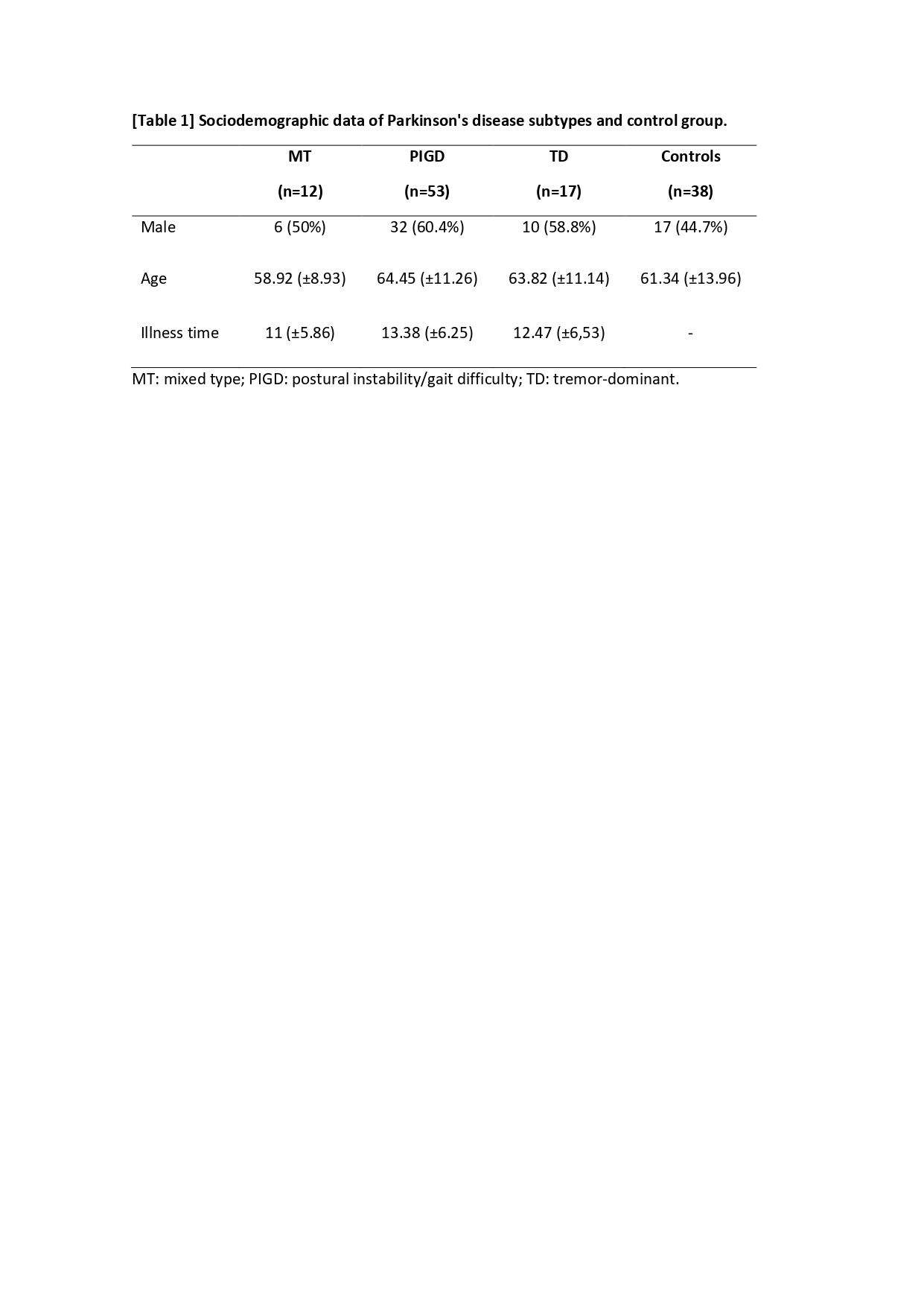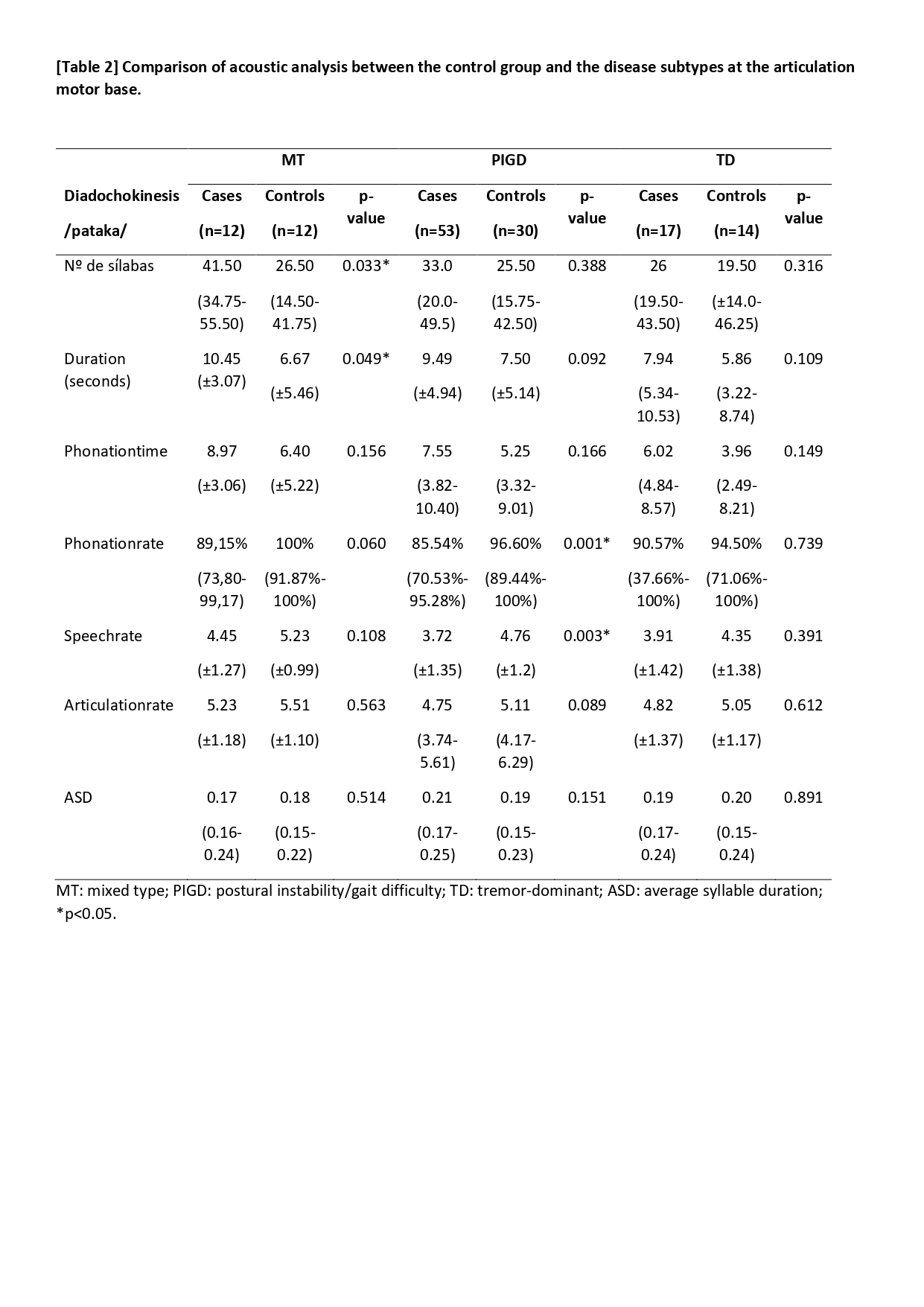Category: Parkinson’s Disease: Clinical Trials
Objective: To compare the performance of the oral diadochokinesis task in the different motor subtypes of PD (postural instability/gait difficulty – PIGD, tremor-dominant – TD, mixed type – MT) with a control group.
Background: Dysarthria is described as one of the symptoms of PD, however, there are few answers about the interference of the motor subtype of the disease in the speech pattern of individuals.
Method: This is a cross-sectional study, approved by the local Research Ethics Committee. Patients diagnosed with idiopathic PD were included and matched with healthy controls by age and sex. Those who had neurological conditions that could interfere with the test results were excluded. Sociodemographic data and disease subtype classification were taken from electronic medical records. Speech assessment in all groups included the oral diadochokinesis task through the syllabic set /PATAKA/ in a single breath and as fast as the subject could produce. The analysis of acoustic variables was obtained using the PRAAT software through the measurements: the number of syllables, duration, phonationtime, phonationrate, speechrate, articulationrate, and average syllable duration.
Results: Eighty two subjects with PD classified into three subtypes were included: 12 MT, 53 PIGD, and 17 TD, whereas the control group consisted of 38 healthy individuals. The sociodemographic data of both groups are shown in Table 1. Table 2 shows the comparison of the acoustic analysis of diadochokinesia between the control group and the disease subtypes. There was no statistically significant difference between the groups regarding age and sex: MT and controls (age: p= 0.964; sex: p= 0.966); PIGD and controls (age: p=0.759; sex: p=0.171); TD and controls (age: p=0.882; sex: p=0.376). When comparing all PD individuals, regardless of motor subtype, with controls, all variables were statistically different. However, when stratifying these variables by subtypes, no difference was observed between them.
Conclusion: Although the motor profiles of PD present a different evolution, the articulatory profile did not differ between the groups, thus suggesting that the motor production of speech may not share the same pathophysiological mechanisms of the other motor alterations.
References: [1] BROWN, k., SPENCER, k. The Relationship Between Speech Characteristics and Motor Subtypes of Parkinson’s Disease. American Journal of Speech-Language Pathology., v.29, n.4, p. 2145-2154, 2020. [2] BURK, B.; WATTS, C. The effect of Parkinson disease tremor phenotype on cepstral peak prominence and transglottal airflow in vowels and speech. Journal of Voice., v.33, n.4, p. 580, 2018.
To cite this abstract in AMA style:
V. Dos Santos, R. Rothe-Neves,, A. Bressanelli, I. Klein, M. Olchik. Performance of oral diadochokinesis in Parkinson’s Disease motor subtypes [abstract]. Mov Disord. 2022; 37 (suppl 2). https://www.mdsabstracts.org/abstract/performance-of-oral-diadochokinesis-in-parkinsons-disease-motor-subtypes/. Accessed March 29, 2025.« Back to 2022 International Congress
MDS Abstracts - https://www.mdsabstracts.org/abstract/performance-of-oral-diadochokinesis-in-parkinsons-disease-motor-subtypes/


